The Colonialist Gaze
The Colonialist Gaze
For the colonial period, different pictorial forms of the representation of the "Other" can be observed. As a genre of image, the picturesque described the depiction of minorities, the poor and the outlandish in the slums of Western cities. However, the picturesque is also found in tourist and colonial travel images as a pictorial cliché of foreign cultures seen as inferior and lower in civilisation. In particular, the standards of living encountered in the "Orient", which did not correspond to the modern amenities of affluent city dwellers, fell into this category. Alternatively, there were the lifestyles of Western artists who fled the big cities for paradises of their own choosing. Settling in the "unspoiled" nature of the Pacific, they created the topos of "South Sea Romanticism" with the image of the "primitive" yet "noble savage".
With the anthropological and ethnographic approach to photography, the photographers believed they could capture the way of life of indigenous cultures from a scientifically neutraland therefore objective perspective. The so-called type portrayals were intended to illustrate the characteristics of the respective "races" and made a classification on the basis of physiognomic features such as the shape of the head or the nose. External forms were supposed to indicate specific character traits.
At the same time, Carl Hagenbeck's Völkerschauen in Hamburg established a popular and populist marketing of the foreign. The first display of "exotic" groups of people was the presentation of a group of Sami (Finland) in 1874: Visitors were encouraged to admire them like the zoo animals nearby. The contemporary picture market reacted with a range of stagings that exaggerated otherness for the purpose of entertainment. Here, the shots were specially arranged to suit the taste of the buyers, as examples of artificially staged views of "cannibals" demonstrate. The ideology of the superiority of the white race was articulated in the colonialist gaze in the deliberate pictorial degradation of the indigenous People photographed, who were depicted like objects and equated with animals.
Here you can see different examples of the colonial gaze and racist stereotypes, which sometimes still occur today.
Do you know more? Please send us your notes and comments.
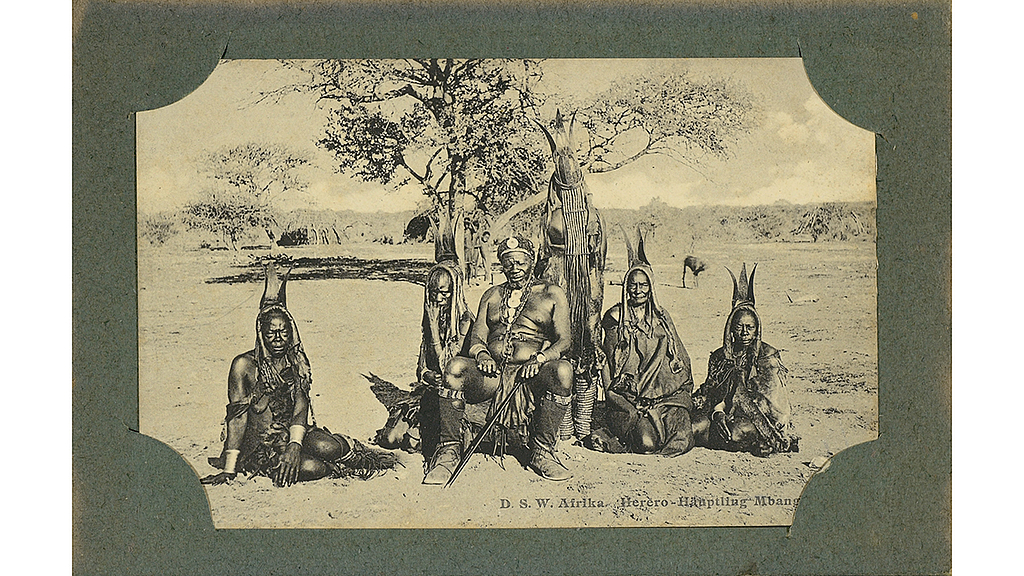
Unbekannter Fotograf: ohne Beschriftung, in: Fotoalbum mit Postkarten aus D.S.W. Afrika um 1900 © Archiv DSM
Name of the speaker: Michael Stephan-Hegner
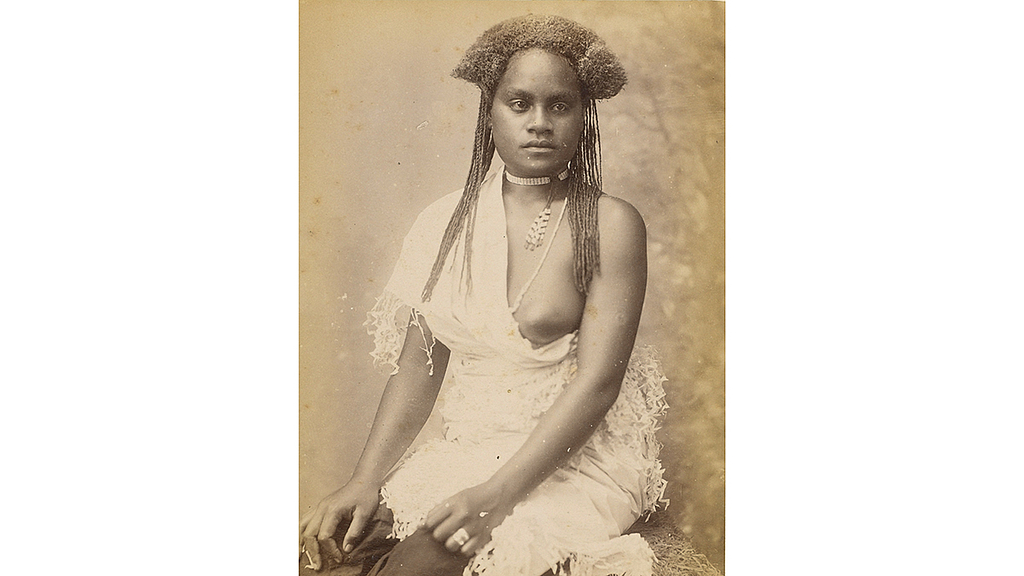
Unbekannter Fotograf: ohne Beschriftung, in: Kleiner Kreuzer S.M.S. BUSSARD in Samoa, 1895 - 1897 © Archiv DSM
Name of the speaker: Michel Spiro
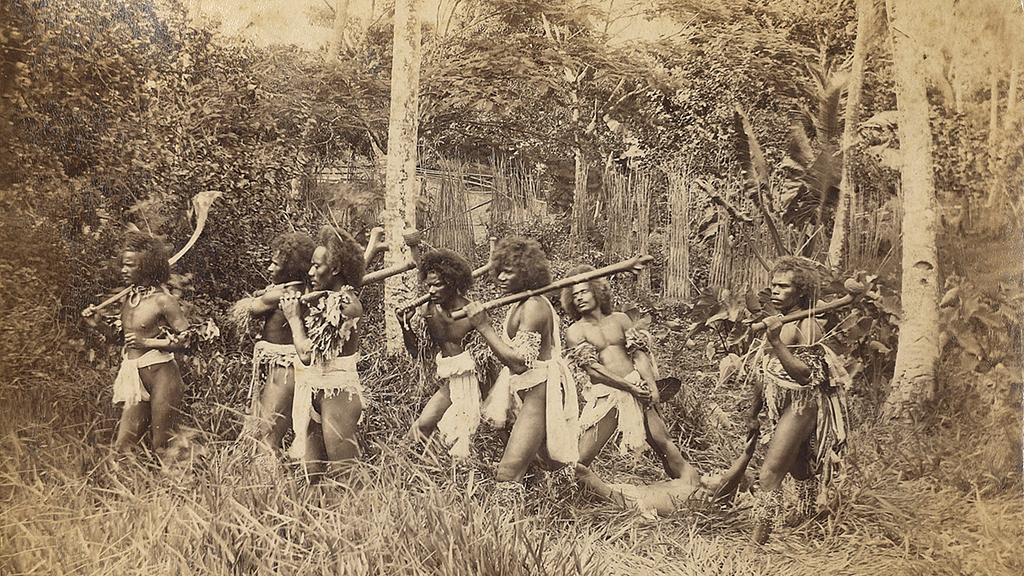
Thomas Andrew: Eine Ermordung auf den Fidji-Inseln, in: Kleiner Kreuzer S.M.S. BUSSARD in Samoa, 1895 - 1897 © Archiv DSM
Name of the speaker: Vivian Koch
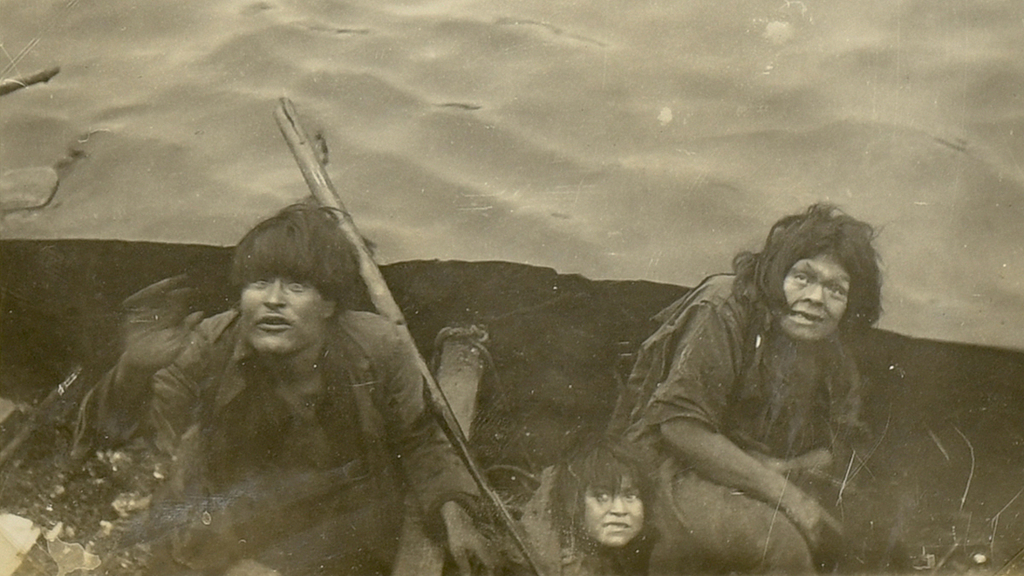
Unbekannter Fotograf: Feuerländer längsseits, in: Fotoalbum von Matrose Karl Heinz Mangelsen gefahren auf dem Kreuzer KARLSRUHE, 1931 - 1932 © Archiv DSM [Die historische Bildunterschrift gibt rassistische Sprache wieder und lautete: „Feuerländer betteln“]
Name of the speaker: Joscha Glanert
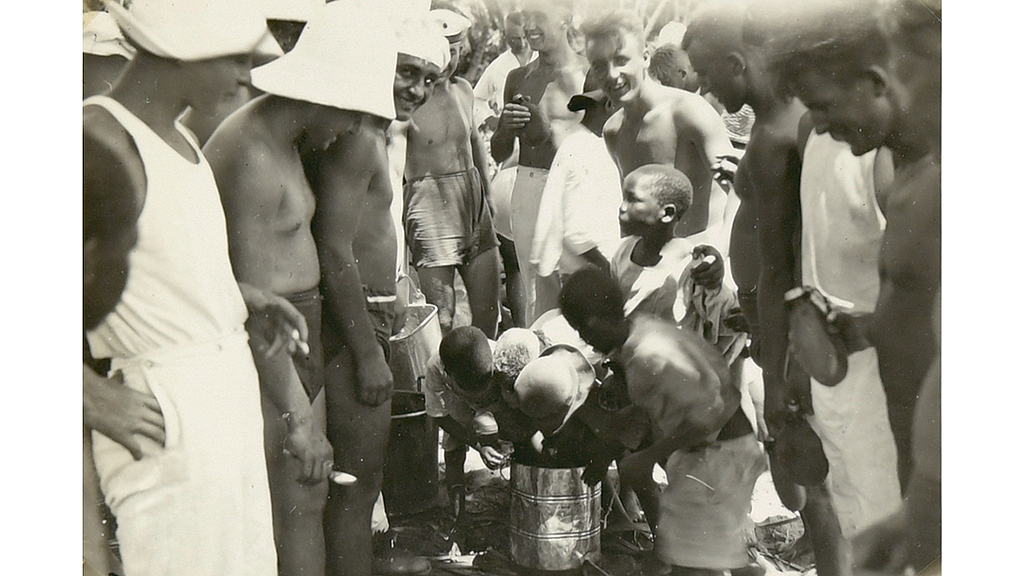
Unbekannter Fotograf: N****kinder essen die Reste auf, in: Fotoalbum von Matrose Karl Heinz Mangelsen gefahren auf dem Kreuzer KARLSRUHE, 1931 - 1932 © Archiv DSM [Die historische Bildunterschrift gibt rassistische Sprache wieder und wurde geändert]
Name of the speaker: Michael Stephan-Hegner
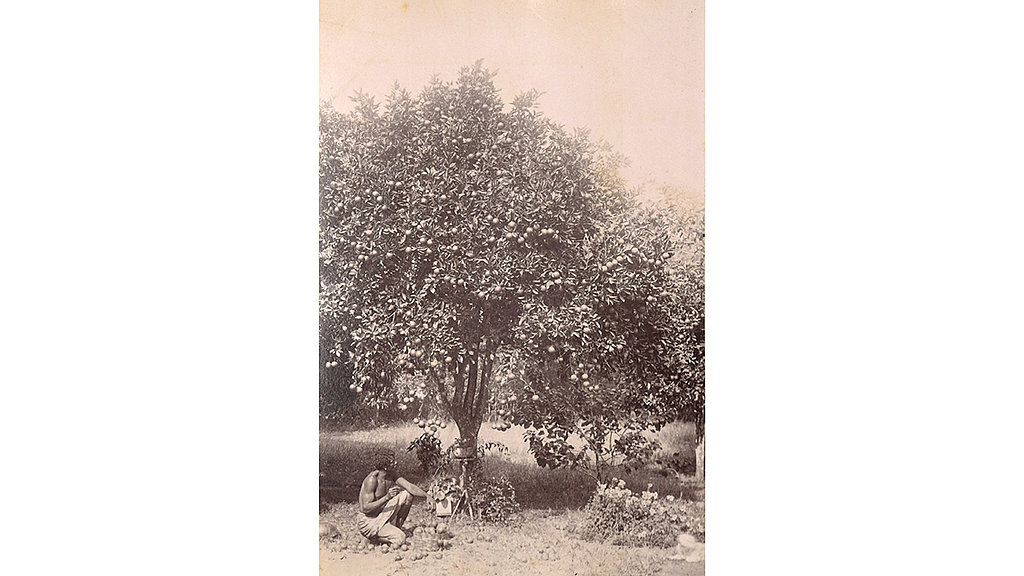
Unbekannter Fotograf: Apfelsinen, in: Reise-Erinnerungen Afrika, 1895 © Archiv DSM
Name of the speaker: Neele Bahr
